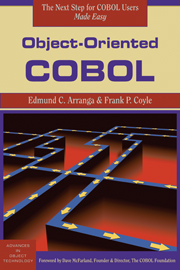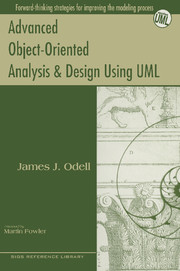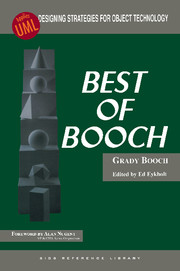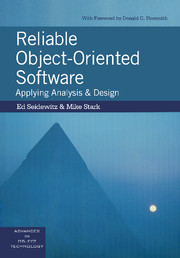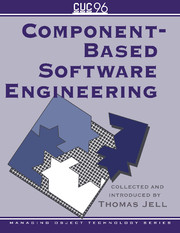Object-Oriented COBOL
This is the only book that walks COBOL users through the next phase of COBOL: Object-Oriented COBOL (OOCOBOL). Written by experts in COBOL programming, Object-Oriented COBOL teaches you how to integrate COBOL with object-oriented methodologies. It provides explanations and roadmaps that will help you understand, navigate, and successfully integrate analysis and design concepts with enabling OOCOBOL constructs. Designed for current COBOL users and based on the authors' experience teaching Object-Oriented COBOL, experienced COBOL programmers can use Object-Oriented COBOL to begin programming effectively with objects in as little as twelve weeks, significantly less than the steep learning curve of twelve to twenty-four months for Smalltalk and C++. Object-Oriented COBOL also includes extensive examples and experiences, written in OOCOBOL, that explain the defining traits of an object-oriented language, such as encapsulation, inheritance, and polymorphism.
- Provides a foundation in object-oriented concepts showing how object technology is a natural extension of earlier structured methods
- Provides an overview of OOCOBOL compilers from Hitachi, IBM, and Micro Focus so readers may compare and contrast the features of each
- Examines and explains OO analysis and design from perspective of CRC cards, responsibility-driven design, and the Rolling Life-Cycle Perspective
Product details
January 1996Paperback
9781884842344
503 pages
253 × 152 mm
0kg
Replaced by 9780132611404
Table of Contents
- Part I. Concepts:
- 1. COBOL and objects
- 2. An object-oriented COBOL model
- Part II. Constructs:
- 3. Classes - a matter of structure
- 4. Objects
- 5. Inheritance
- Part III. Objects in Action:
- 6. Messages
- 7. Creating and destroying objects
- 8. Working with objects
- 9. Collections
- Part IV. Putting Objects to Work:
- 10. Object-oriented analysis and design
- 11. Migrating Legacy Systems
- Appendix A. Object-oriented COBOL vendors: Hitachi, IBM, and Micro Focus
- Appendix B. The Library Application
- Appendix C. COBOL reserved words
- Appendix D. New COBOL reserved words
- Appendix E. Intrinsic functions
- Appendix F. COBOL 85/89 features.

